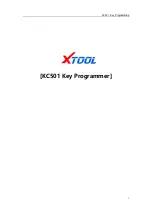
PTE-50-CET
Sheet 10
2.2.
FRONT PANEL CONTROLS
Allows the user to communicate with the power output section of the unit in a manual way, or using a
software program. To achieve this, it has the following sections:
1.
Displays and LED indicators
: indicate the various selections made by the operator and the
status of the unit.
2.
Press key controls
: this is a membrane keyboard with acoustic feedback, in which the various
different functions available in the unit are selected.
3.
Multi-turn control knobs
: these are rotative pulse generators that are used to make the different
selections desired on the displays indicators, in an easy and fast manner.
4.
Monitor taps
: contain the circuits to detect the status of the signals applied in these taps.
Figure 3:
Front Module
5.
External Reference Taps
: contain the circuits to synchronize the power outputs to the phase
and frequency signals connected to these taps.
6.
Communications
: the PTE units have the capability to communicate with some external control
devices by RS-232 (allowing the user for printing results and calibration from the PC) and by
BUS-PTE, for interconnection with PTE RANGE units and control of these by a PC.
7.
Internal Bus Interface
: establishes the communication between the
Front Panel
and the
Intelligent Generator Module
, via the microprocessors included in both.
8.
Time Generator
: it generates the high accuracy time reference necessary to generate the
internal phase and frequency.
9.
Output taps
: these are the taps of the auxiliary voltage supply of 110 V ac, the power output
taps, and the tap to start an external timer.












































